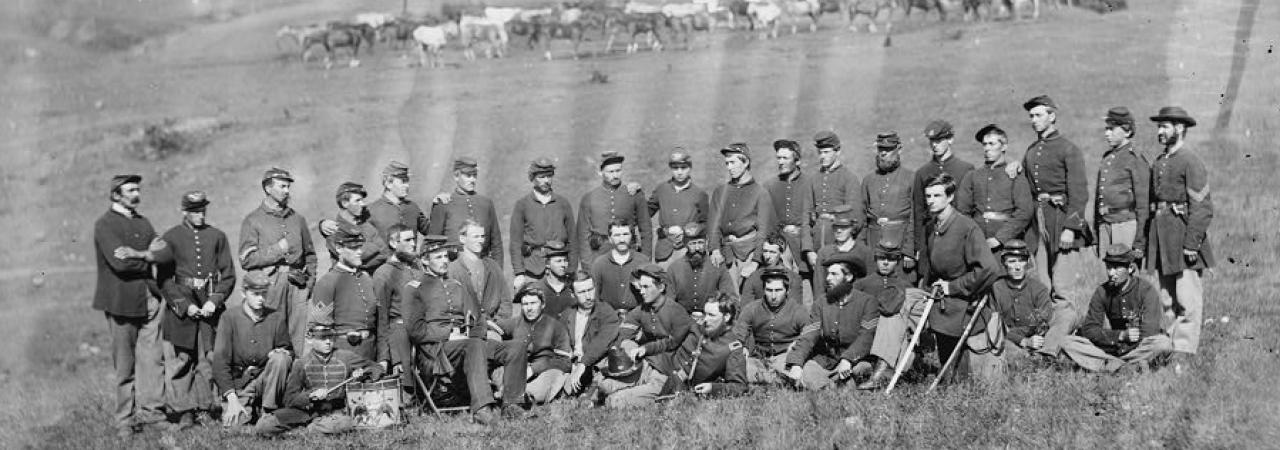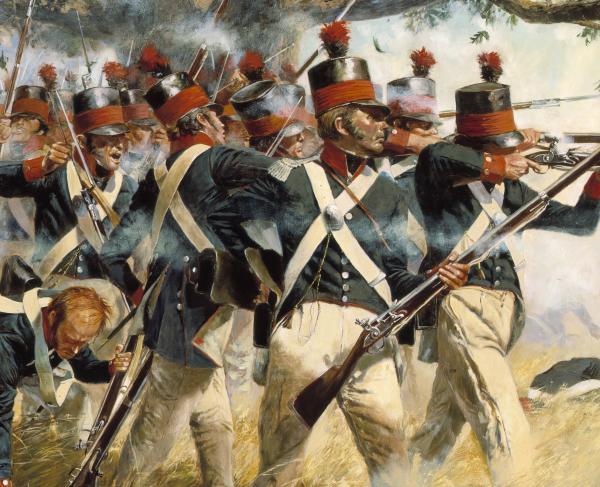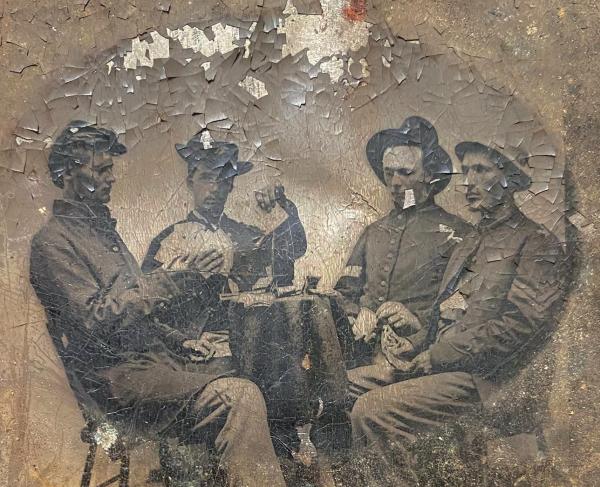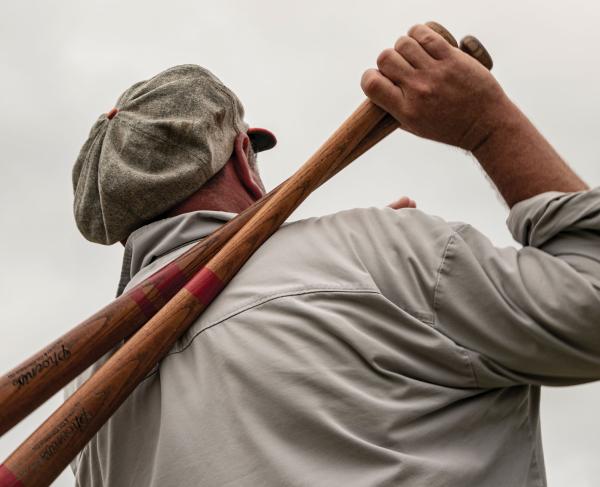The Civil War soldier’s home away from home was his regiment. Regiments were often composed of men who had lived in the same neighborhoods and had known each other before the war. In some cases, regiments had a distinctive regional or ethnic character—Irish, German, Italian, Jewish, Indian, or black, among others. In some cases, such as the Zouaves, regiments were distinguished by their vivid uniforms.
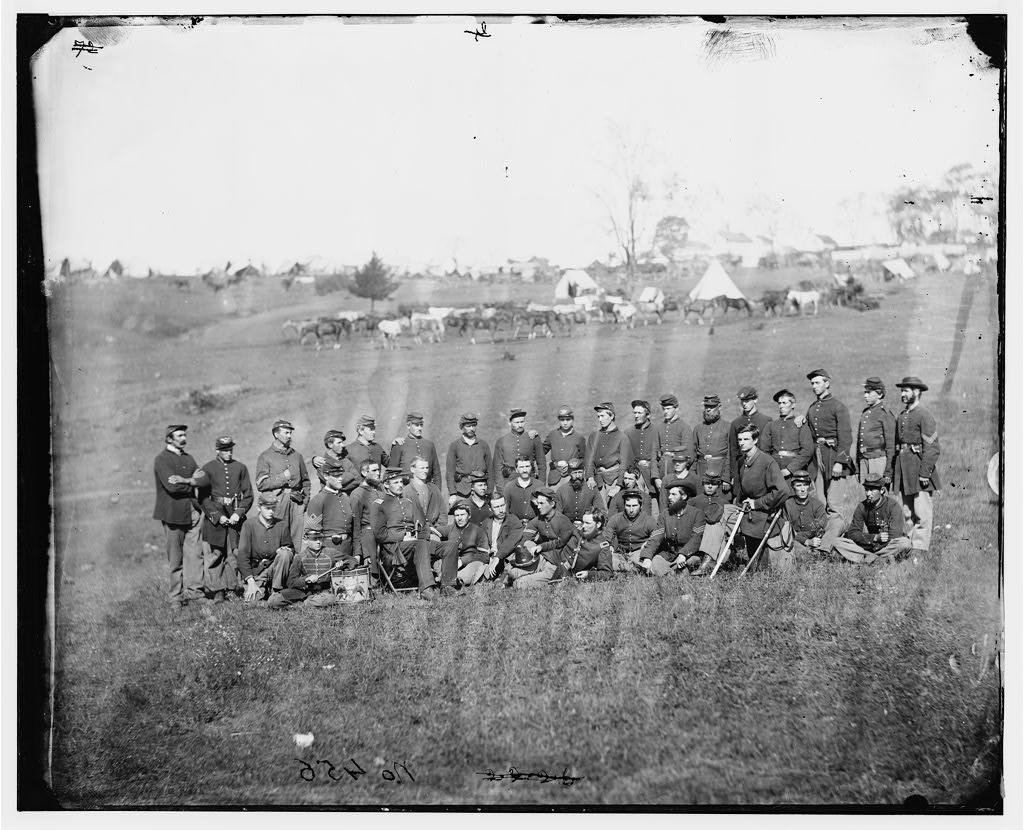
Regiments were not as organized at the beginning of the conflict as they later became. In the enthusiastic rush to volunteer for service in 1861, individuals would travel through their communities to raise regiments on their own which they would then present to the army. These volunteer regiments would select their own commanders, and sometimes, provide their own uniforms and weapons.
The overwhelming majority of regiments in both the North and the South were infantry. The volunteer infantry regiment, as prescribed by United States Army regulations, consisted at full strength of 10 companies, each of 97 men and 3 officers. A colonel commanded a regiment, assisted by a lieutenant colonel and a major. Because of absenteeism, the actual strength of a regiment usually numbered only about half of the prescribed strength. Each company was divided into two platoons and each platoon into two sections. Above the regimental level was the brigade, made up of four regiments; the division, made up of three or four brigades; the corps (authorized by Congress on July 17, 1862), made up of two or more divisions; and the army, involving one or more corps.
In the Confederate Army-which was organized very much like the Union—a typical infantry company included about 100 men, led by a captain, 3 lieutenants, 4 sergeants, and 4 corporals. The regiment was headed by a colonel, a lieutenant colonel, a major, an adjutant, and a sergeant-major. As in the Union forces, attrition from casualties meant that regiments often fought at half strength in the later years of the war. In later years of the war state governments in the South were responsible for recruiting, organizing, and often rudimentary training of regiments. State authorities designated each regiment, once organized, by number: for example, the 1st Virginia Volunteer Infantry. (The Union Army continued to use the recruiting mechanisms that were in place in the Federal Government before the Southern states seceded.)
Zouaves
The Zouave of the French Army was originally recruited in the 1830s from native North African troops but the units were soon made up entirely of Europeans. The Zouave seemed the “beau-ideal of a soldier,” as General George B. McClellan described him. They enjoyed a reputation of being recklessly brave on the battlefield, as though warfare was merely a game and their lives simply the table stakes. They were members of an elite unit with an esprit de corps which bound them together as a family, with the regimental commander known as “Father” among the Zouaves, as the family head. They were also bound together by their distinctive dress. The Arab-inspired short jacket, baggy trousers and fez were key parts of their identity.
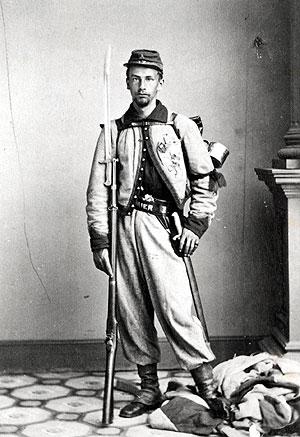
It was apparently during the Crimean War in 1854 and the Italian-Austrian War of 1859 that the Zouaves received widespread public notice outside France. Newspaper coverage of the conflicts and illustrations in magazines like Harper’s Weekly gave the American public ample opportunity to become familiar with the word Zouave long before the Civil War began. The Zouave uniform and fame was as well known on this side of the Atlantic as in Europe, and it was only natural that there would be Zouave imitators in the New World.
Despite the successes of the Zouave in the Crimean War, it was not until 1859 that the first widely publicized American Zouave unit was formed.
This organization, the United States Zouave Cadets (a company of the 60th Regiment, Illinois State Militia), was created from a moribund Chicago volunteer company by Elmer E. Ellsworth, a young idealist with a military persuasion. Newspapers began carrying accounts of their feats at local drill competitions, and especially, of the brilliant uniforms Ellsworth had designed for his unit. One of the Cadets described the uniform as:
A bright red chasseur cap with gold braid; light blue shirt with moire antique facings; dark blue jacket with orange and red trimmings; brass bell buttons, placed as close together as possible; a red sash and loose red trousers; russet leather leggings, buttoned over the trousers, reaching from ankle halfway to knee; and white waistbelt.
Ellsworth’s Zouaves toured the Northern States challenging all comers to drill competitions, spreading their fame throughout the country, and inspiring the creation of other Zouave units. Although there were Zouave units in America before Ellsworth, it was his regiment that really popularized the style.
The original Zouave French African soldiers wore loose and baggy trousers, a short open jacket and a fez and turban for headgear. This was in actuality the dress of local Turkish and African populace. Originally the dark blue jacket was trimmed with red on the edges only. The vest was also dark blue, with red pants and a blue sash. All garments were made of cotton cloth. The turban and fez were red. While the French Zouave uniform remained fundamentally unchanged from the 1840s until the beginning of the Second World War, American Zouaves wore uniforms that ranged from almost exact copies of the original style to uniforms that were so modified as to be Zouave in name only.
The first Zouave regiment in the Civil War, the 9th New York Volunteer Infantry or Hawkin’s Zouaves, was mustered in on April 23, 1861. Other cities and states in the North and the South also saw the creation of Zouave units. One French language newspaper commented “Ils pleut des Zouaves” (It is raining Zouaves) because there were so many of the units formed in 1861. There were Zouaves present at every major Civil War battle from First Manassas or First Bull Run to Appomattox.
